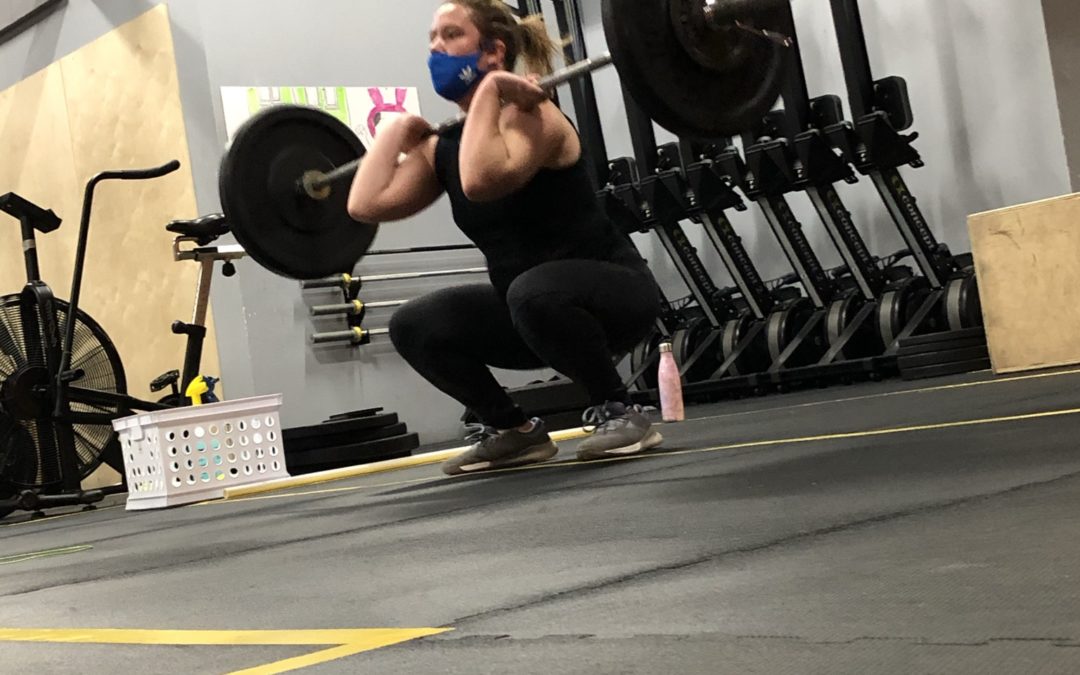Spoiler Alert: the answer is YES!
The other day a woman in class asked me if it was safe to squat below 90 degrees. She has been told by previous coaches that it was unsafe for her knees to squat that low.
Should you squat below 90 degrees? Well, do you want to be able to stand up? Get off the toilet? Then, yes – you should squat below 90 degrees!
It’s only when you squat below parallel that you start to activate the large muscles on the back side of your body – namely the glutes and hamstrings. And these are all important muscles to keep using!
Can you hurt yourself squatting? Yes, Squatting a lot of weight with poor form can cause an injury – so don’t squat with poor form! And don’t squat with a lot of weight until you know your form is solid!
So, how do you squat with proper technique?
First, stand up straight with your feet shoulder width apart and your toes angled slightly out (about 12 degrees if you want to get super technical!) Clench your butt cheeks. This will set your hips in a neutral position.
Then, prepare to get sucker punched in the gut. This is different than sucking your gut in – we want to brace our whole core, front, sides, and back! This locks your hips in that neutral position.
Start your squat by pushing your butt back. You won’t be able to keep your butt cheeks clenched as you start to move back and down – it’s OK, the purpose was to get everything in the right position and you’ve done that!
Now think about sitting back on a chair. As your butt goes down, push your knees out to keep them tracking in the direction of your toes. We don’t want your knees to cave in, but we also don’t want them to push too far outside of your toes either.
While pushing your knees out, be sure to keep your feet flat on the floor, and think about digging your big toe into the floor to help you do that. You can also think about tearing an imaginary piece of paper apart with your feet or screwing your feet into the ground.
It is very important to keep your knees behind your toes – it’s when the knees start going over and forward of the toes that we put too much torque and shear on the knee joint, causing pain and possible injury.
The goal is to keep your chest upright as your hip crease descends lower than the top of your knee. To help facilitate this your can reach your hands up above your head and grab your thumb. When viewed from the side, your ear should move straight up and down (in a vertical plane.)
Don’t just let gravity take you down, use your hip flexors to actively pull you down. And keep all of your muscles active when you reach the bottom, don’t just relax and let everything sink to the floor. Once you get to the bottom of that squat with your chest upright and your back flat, think about squeezing your glutes and hamstrings to rise from the bottom of the squat position – ascending the same way you descended. Stand tall at the end.
Virtuosity is key here. Squatting is a basic, functional, everyday movement, but doing it well isn’t simple!

